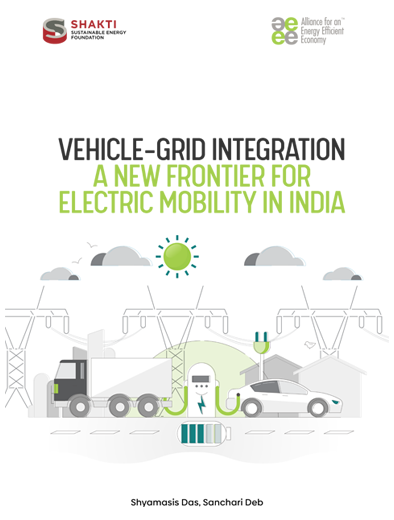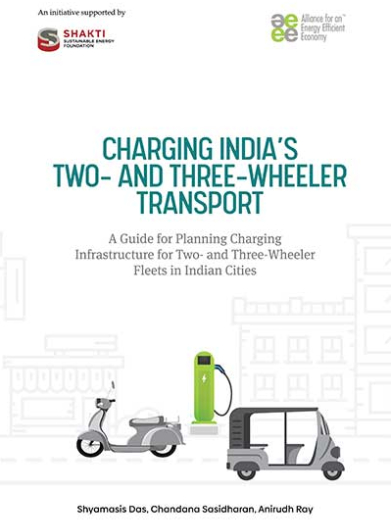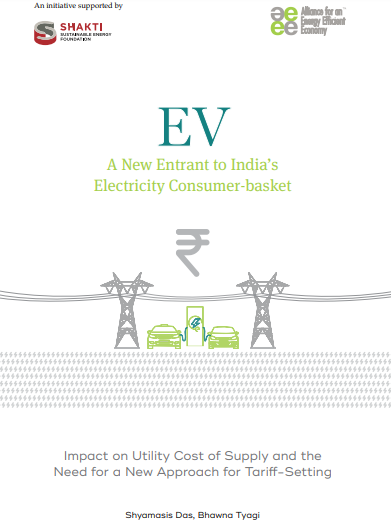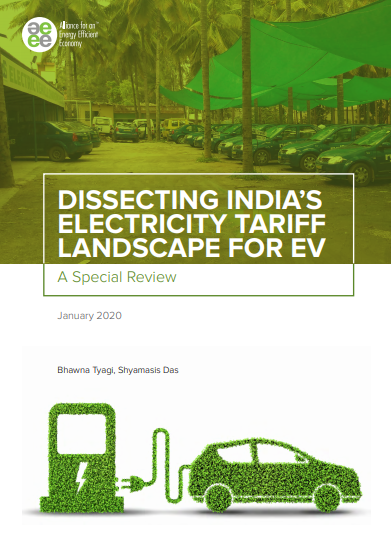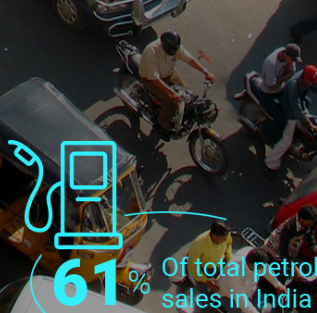Enabling E-Mobility in India - From Vision to Action to Traction
In India, there is growing interest among policymakers to encourage adoption of Electric Vehicles (EVs) for road transport and phase out fossil fuel-consuming Internal Combustion Engine (ICE) vehicles, in order to achieve the following three major objectives:
- Reduce petroleum imports and thus increase national energy security
Import of crude oil accounts for about 85% of India’s petroleum supply. Reduction of oil imports will also help decrease the country’s Current Account Deficit (CAD). - Reduce India’s carbon footprint by leveraging higher efficiency of EVs over ICE vehicles and enabling effective renewable energy off-take
EVs are almost 5 times more efficient than similar ICE vehicles (NITI Aayog & World Energy Council, 2018). The total greenhouse gas (GHG) emission reduction potential from the vehicles supported under the second phase of Faster Adoption and Manufacturing of Hybrid and Electric Vehicles in India (FAME) is estimated to be about 7.4 million tonnes of carbon dioxide emissions over the deployed vehicles’ lifetime (NITI Aayog & RMI, 2019). Furthermore, India’s renewable energy generation capacity (including hydro) has reached more than 129 gigawatts (GW), equivalent to about 35% of the total power generation capacity (CEA, 2019). Thanks to strong policies to increase the share of non-fossil fuel-based electricity, the emission intensity of grid electricity in India can be further reduced. Not to mention the potential application of EVs for energy storage could help ensure grid stability as dependence on variable renewable energy sources increases. - Reduce vehicular emissions of particulate matter (PM) and other pollutants and GHGs
Twenty-two of the 30 most polluted cities (in terms of PM2.5 concentration) are reportedly in India (IQAir, 2018). This is not only an issue in Tier-I cities; pollution levels in Tier-II and Tier-III cities are increasing at alarming rates.
It is evident that shifting away from ICE vehicles is no longer a choice; this transformation is necessary to decarbonise road transport in India. The Government of India (GoI) has taken a slew of measures to promote EV adoption in the country. The FAME Phase II subsidy scheme, with a budgetary provision of ₹ 100 billion, is a major policy intervention that aims to reduce the cost of EV acquisition and promote the establishment of public EV charging facilities. At the sub-national level, several states and UTs have announced EV policies specifying fiscal, non-fiscal, and other incentives to boost EV adoption.
India’s pursuit for electric mobility
Faster Adoption and Manufacturing of Electric Vehicles – II
- The NEMMP targets were supported by fiscal incentives of 795 crores ($ 114 Mn) through FAME scheme.
- as a part of Government’s investments for demand creation, incentives are provided to buyers, which can be availed upfront at the point of purchase.
- The scheme is expected to be renewed as FAME II focusing on city level public sector fleet electrification
City level facilitation: Smart Cities, AMRUT and Light house
- To facilitate city level developments three key programs Smart cities. AMRUT and Light house were launched. There are 100 smart cities. 500 AMRUT cities and 1 Light city (Pune) approved by the government.
- Smart cities and AMRUT focus on a holistic development and Light House initiative will focus on a ‘Shared’. ‘Electric’ and connected mobility developments in the city.
- investment: 1 lakh crore ($14 Bn) for urban development
Charging Infrastructure: Power sector facilitation
- Power sector entities have taken an active stance in electric mobility –
- Ministry of Power declared EV charging to be a service rather than sale of electricity, facilitating the private sector participation.
- MoP is drafting a policy on charging infrastructure covering technological, regulatory and implementation aspects
- Statutory bodies BEE, CEA, CERC, SERC are enabling the sector by exploring/forming safety provisions, tariff categories, standards, business models etc.
Evolving tax regime
Tax intiatives to promote fully electric vehicles:
- GST reduction on Fuel cell vehicles: 28% to 18%
- GST reduction on Li-ion battery: 28% to 12%
- Hybrid vehicles have been kept in the same category as luxury cars and will be taxed at the peak rate of 28% plus a cess of 15%
Public-private sector alliances
- Tata Power and Mahindra collaborated with the Government of Maharashtra to deploy EVs and EVSE in the state.
- PGCIL collaborated with L&T Hyderabad Metro Rail (HMR) to set up charging stations in metro premises.
- FORTUM and IOCL collaborate to set up charging infrastructure in Hyderabad.
- Smart-e in collaboration with Kinetic green, DMRC, PhonePe, Rajasthan Electronics & Instruments Ltd (REIL) and Exicom is deploying e-mobility ecosystem in Delhi
Demand Creation
India has witnessed four demand aggregation models in the electric mobility sector
- EESL led demand aggregation
- PSU & city administrators led
- Private sector led
- City-led under FAME program
- Tariff categories, standards, business models etc.
In spite of the government’s unambiguous policy signal and considerable financial support, the EV market is finding itself on a bumpy road. Vehicle electrification in India is still at its nascent stage, with EVs (both battery electric vehicles (BEVs) and plug-in hybrid electric vehicles (PHEVs)) only getting 0.06% of the car market share through 2017 (International Energy Agency, 2018). The sale of electric two-wheelers (2-W) is less than 1 percent of the vehicle market share (International Energy Agency, 2019).
Strategic Needs of India’s electric mobility Sector
Planning of Charging Infra for Tier-I or Tier-II Cities
- Lack of understanding; band-aid approach not helpful
- Multi-stakeholder project – alignment of planning
- Translating theory to action
Challenges and Solutions in Scaling-up Charging Infra
- Significant challenges in establishing charging facilities
- Varying risks/ barriers (technical, financial, legal, institutional, etc.)
- Need for implementation strategies and innovative business models
Tool for Planning Electrification of Urban Bus fleets
- Different factors closely inter-connected – route length, battery size, charging time, charger, electricity connection
- State/ local public agencies not having capability
- Already faux pas reported in diff. states
Strategy for Providing Basic, Standardised and Smart Charging Network for LEVs
- Electricity available in nook & corner of human habitat Spreading out charging points advantageous to utilities
- SMART: Simple, Marketable, Affordable, Robust and Targeted
Integration of DER, Home and EV
- Maximising uptake of renewables for EV charging
- DER enabled by smart chargers mitigating impact of fast charging on grid
Learning and Unlearning from EV Charging Pilots
- Several pilots implemented by different players but outcomes unknown – Good, Bad & Ugly
- Knowledge-sharing and demystifying to promote investments in EV charging
- Making every experience count
There are barriers to adoption of EVs, including the high upfront EV cost, limited driving range of existing EV models, lack of adequate charging infrastructure, considerably long charging time, and the need for awareness of vehicle owners about EVs. In a nutshell, implementation of e-mobility in India is akin to solving a jigsaw puzzle.
AEEE is at the forefront of carrying out incisive research on e-mobility in its pursuit to solve the puzzle. AEEE’s intervention is able to fill the critical knowledge-gaps, facilitate in bringing regulatory reforms, attract investments in charging infrastructure and enable creation of a vibrant and matured EV market. Recognising AEEE’s deep research competence on EV, key stakeholders at the central and sub-national levels are found to engage with AEEE’s researchers.
